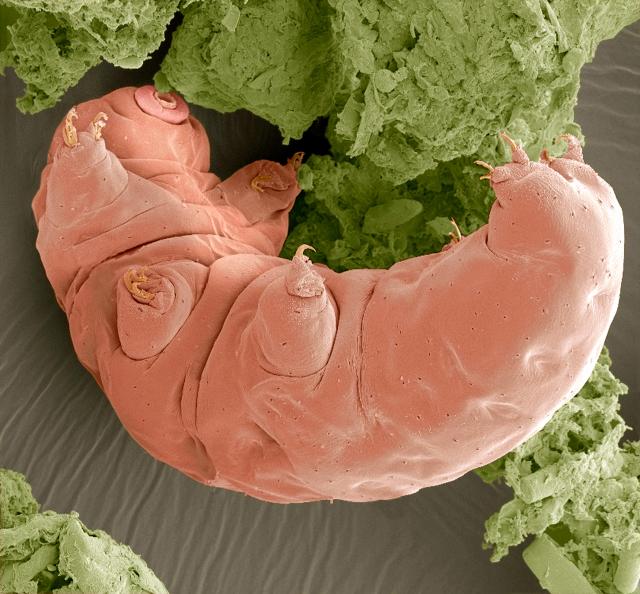
I have long been fascinated by water bears (also known as tardigrades, and more amusingly and infrequently as moss piglets), though I have yet been lucky enough to see them for myself, wandering about their microscopic worlds.
However, they have been items of interest as of late due to some of their more bizarre qualities. (I like to think of them as literal inclusions in the news, wandering about among inky words on printed pages). If the distinction of being able to survive in the vacuum of space along with other extreme environments wasn’t enough, it was recently revealed that they have an inordinately high amount of foreign DNA in their genome – almost 18% relative to many organism’s 1% – earning them the playful moniker of “DNA thief” in articles on the subject.

Much of this extra DNA may be incorporated into the tardigrade’s potential tool kit during periods of desiccation. Water bear DNA is suspected to actually sheer and fragment when dried out, and to reassemble once re-hydrated. This period of genome construction probably provides ample opportunity for stray genetic material to sneak in.
Researchers have also recently discovered more about how water bears may cope with this extreme drying out and jumbling of their genetic material. Apparently these bitty creatures produce a sort of “bioglass” that coats and protects their cellular contents.
So along with discoveries of new members of the water bear extended family, there’s no doubt there are many strange revelations to come concerning these curious creatures.
Updated note: Thanks to Robie and her comment below. Turns out there is some conversation occurring right now with regards to whether the figure of ~ 17% foreign DNA is, in fact, accurate. So while it may take a little time for researchers to suss out the truth of the matter, this is an interesting insight into the tug and pull of the scientific process.

Apparently, the jury is still out on the amount of foreign DNA in their genomes; given the difference between the PNAS paper and the preprint referenced below, it might be a while before this is completely resolved.
https://whyevolutionistrue.wordpress.com/2015/12/04/hold-the-presses-maybe-tardigrades-dont-have-so-much-horizontal-gene-transfer-after-all/
Regardless, they are among the most interesting little creatures that I know of.
Robie
LikeLike
Thanks Robie, I added an update at the bottom noting that!
LikeLike
Incredible insights.
LikeLike